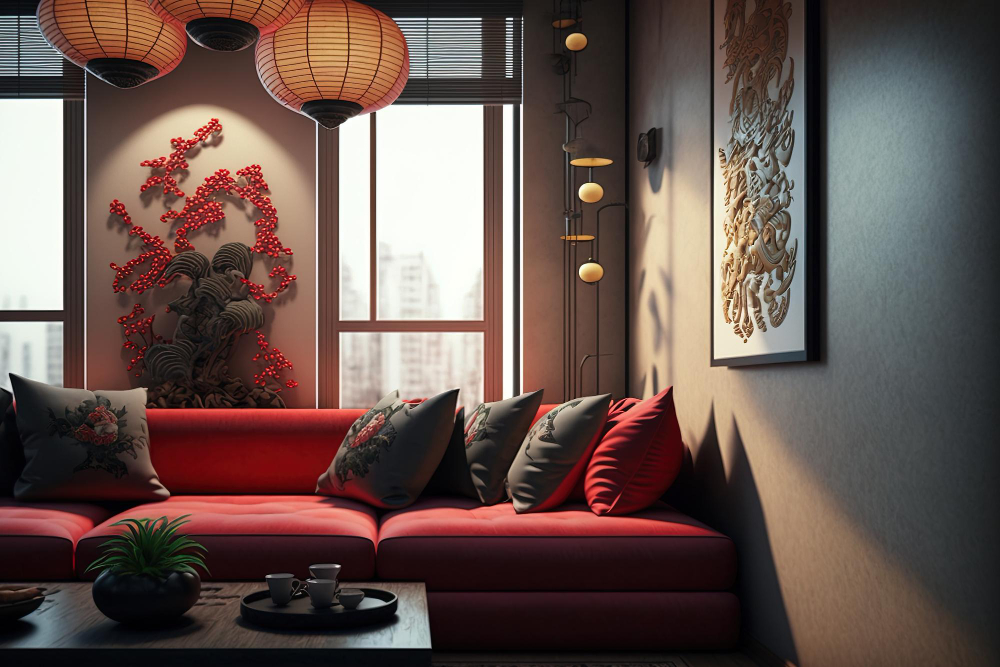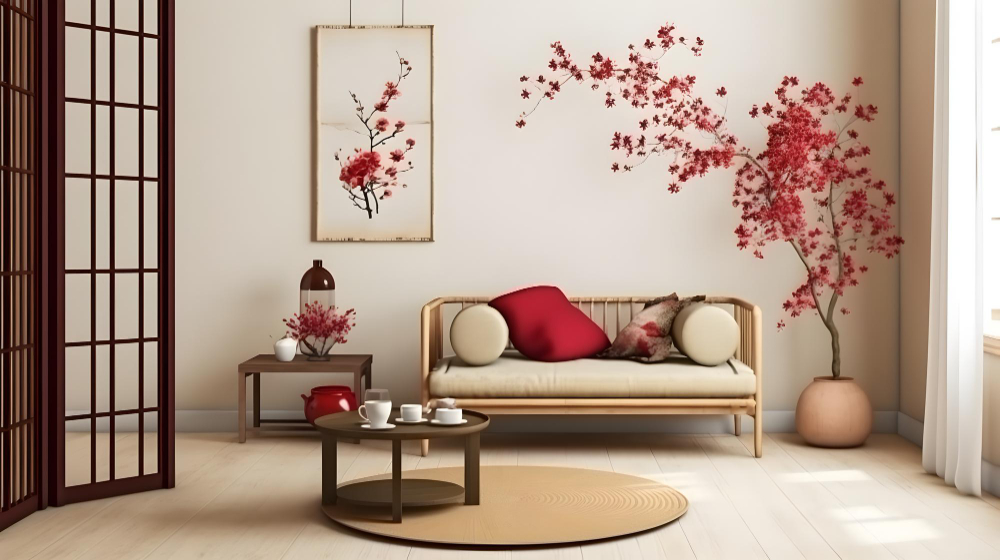The Art of Feng Shui: Designing a Harmonious and Balanced Home

Feng Shui is an ancient Chinese practice that can help you create a mindful and peaceful home. Feng Shui (pronounced “fung shway”) literally means “wind and water.” The principles of this practice can be applied to all aspects of your life, from the way you arrange furniture in your living room to how much time you spend at work every day.
This ancient practice uses geomancy to determine how elements in your home affect good health and success.
Feng shui is based on the belief that everything in the universe has an energy flow and those energies can be positive or negative. Through feng shui principles you can use this knowledge to improve your home’s balance of positive energy, which will lead to better overall health and prosperity.
If you’re looking for ways to improve the energy flow in your home or office space, then Feng Shui may be right for you!
The Five Elements of Feng Shui
The five elements of feng shui are wood, fire, earth, metal, and water. Each element has its own unique properties that can be used to balance the energy within your home.
The placement of these elements (e.g. earth element) will help you create a harmonious living environment by balancing the flow of chi or life force through your home. For example, placing a water feature in the north of your home will help to balance out any negative energies from this direction.
The Bagua Map: Understanding the Energy Areas of Your Home
The bagua map is a circular diagram that represents the eight main areas of life. The Bagua Map shows how these different areas are interconnected and how they affect one another. It demonstrates how to use these energy zones to create balance in your home.
To begin, you need to determine where each type of energy lies within your house by locating them on the bagua map. For example: if you want more money in your life, look at where “Wealth” lies (in this case it’s located in the northwest sector). If you’re looking for love or relationships, look at where “Relationships” is illustrated (in this case it’s located in either direction). Once you’ve determined which area needs work based on what it represents to you personally–then proceed with making changes as necessary.
Feng Shui Practitioners’ Tips for Each Room
Here are some Feng Shui tips for each area of the house:
In the kitchen, locate your stove and refrigerator on the left side of the room. This will help to create positive energy in your home by allowing good fortune to enter through that side of the house.
If you have an open-concept kitchen and dining room, try to position furniture so that it creates separate spaces for each of these areas. For example, if there is a large island between these two rooms then consider placing a desk or bookshelf across from it so that when people sit at this desk they do not feel as though they are partaking in every part of family life (which can cause stress).
In bedrooms avoid placing beds directly opposite doorways as this may cause nightmares or insomnia due to feeling trapped by incoming negative energy from outside sources such as strangers entering through doors or windows during sleep hours!
Bathrooms should ideally have water features such as fountains or aquariums since these promote good health & longevity through peaceful sounds produced by running water which also helps relieve stress levels caused by daily activities like commuting via public transportation systems.
Incorporating Feng Shui Colors
Feng Shui colors are important for creating a harmonious and balanced home. There are many different Feng Shui schools of thought, but most feng shui experts agree that the color red can be used to activate energy in your home. In addition, green is often used as a calming color because it represents balance and harmony.
The best way to choose the right colors for your space is by consulting an experienced Feng Shui consultant or interior designer who has experience using these principles in their designs. A good consultant will be able to help you select appropriate paint colors based on where you want them placed within the room (or rooms), as well as whether or not they need special lighting fixtures installed over them so that they’re visible at all times during both day and night hours when someone may be looking at them from outside through windows onto other properties nearby without being able to see what exactly is inside those homes because there aren’t any lights shining from within outwardly yet.

Practice Feng Shui and Furniture Arrangement
In Feng Shui, the furniture arrangement of a room is an important consideration. You can use the following tips to help you create a harmonious and balanced environment for your home or office:
- If you have to move large pieces of furniture, do so during the day when everyone is awake.
- A feng shui expert may advise avoiding placing mirrors directly across from doors or windows as this creates negative energy flow in your space. Instead, place them at an angle so that they reflect light into other areas of the room instead of blocking it out completely (such as on walls). This will help balance out any negative energy coming in through those entrances while still allowing plenty of sunlight into those spaces without being blocked by large expanses of glass or mirror surfaces!
Decluttering and Organizing for Positive Energy Flow
To achieve good feng shui and have a harmonious and balanced home, it is important to declutter your space. This can be done by:
- Getting rid of items that are no longer useful or needed in your life. If you haven’t used an item in the last year, chances are good that it’s time to let go.
- Purging any clutter that may be present in drawers, cabinets and closets throughout the house (this includes knickknacks). You want to create as much space as possible so that energy can flow freely through every room without being blocked by unnecessary objects!
Feng Shui Practice and Natural Elements
Natural elements are an important part of Feng Shui. They’re used to balance the chi in your home, which means they can help create a harmonious environment.
Here are some ways you can incorporate natural elements into your design:
- Use wood furniture and accents that match the wood element tones in the room. This gives off a warm feeling, which will make guests feel welcome and comfortable. Wood also represents growth, so it’s a good idea if you want to bring prosperity into your life and achieve harmony (or attract new clients).
- Use metal furniture and accents that match the metal tones in the room. This will give off a cool feeling, which is good if you want to attract love or romance into your life (or keep the peace when you have many people living in your home).
- Use water features, such as fountains and aquariums. Water represents life, so it’s a good idea if you want to attract prosperity into your life (or keep the peace when you have many people living in your home). Use plants and flowers that match the color scheme in your room.
- Use plants and flowers that match the color scheme in your room. Plants embody life energy and give off a cool feeling, which is good if you want to attract love or romance into your life (or keep the peace when you have many people living in your home). Plants are symbols of good energy, especially in holistic spaces.

Feng shui is a holistic approach to design and home improvement that can help you create a space that’s more harmonious, balanced, and positive. It’s all about the energy flow in your home, so if you want to feel better or be more productive in your day-to-day life, implementing some of these tips could be just what you need.




